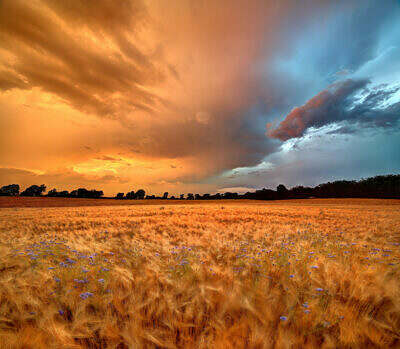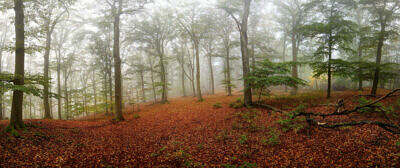Until 10.000 years ago, northern Germany bordered the glacial margin of the Nordic ice cap. At this time of the Pleistocene, so much water was stored in the form of ice in the glacial system up to three kilometers thick, that the sea level was about 130 meters (427 feet) below the present-day level. As a result, the North Sea fell dry and the Baltic Sea gave way to the thick ice sheet. The Scandinavian ice sheet reached as far as Hamburg and Berlin. In the south, the glaciation of the Alps bordered the area of Munich.
The setting sun was just touching the horizon and sent its red rays deep into the forest for a few minutes. The already colorful autumn forest lit up intensely for just a fleeting moment. The impression of this landscape was so overwhelming that it carried me back to the time of the hunter-gatherers. It must have looked very similar everywhere in Central Europe when the forests reconquered the ice-age tundra and people held their rituals in these forests.





